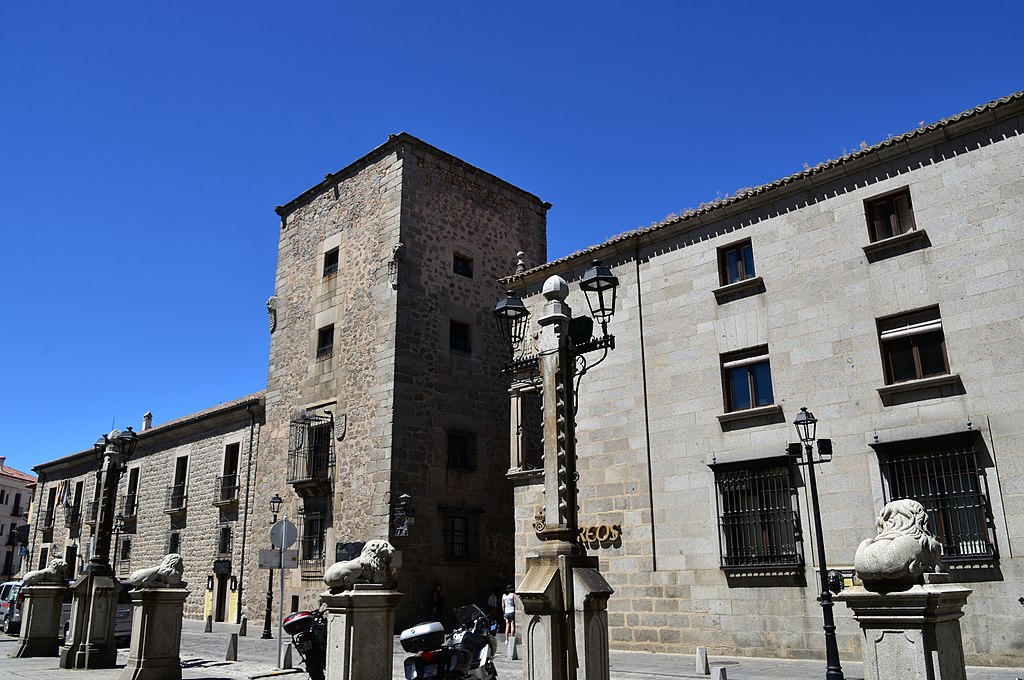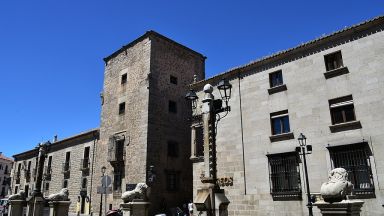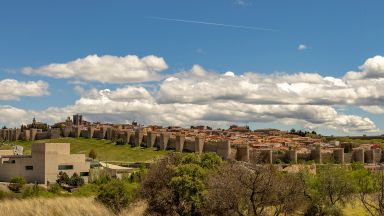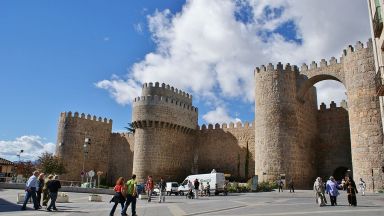15 Palaces to Discover in Avila
This website uses affiliate links which earn a small commission at no additional cost to you.
Avila is a beautifully historic city and a UNESCO World Heritage site with perfectly preserved medieval city walls, which are typical of the city’s predominant Romanesque architecture. If you live in Madrid or you are visiting the capital, it is a must-see since it is only one hour away by car or train. A great way to learn about Ávila’s history and to explore the city is by visiting its Gothic and Renaissance palaces.
In the late 15th century and throughout the 16th century the city of Ávila enjoyed its golden age of social and economic splendour, reflected in the evolution of its civil architecture, with many splendid fortresses and palaces built in various styles ranging from Late Gothic to the Renaissance, requiring the restoration or demolition of the ancient medieval houses.
Most of them are located within the city walls, following their layout and forming a second line of defence. They are attached to the walls or built to form squares around the city gates.
Guided tours of the palaces are run by the tourist office on Saturday, which includes viewing the interior of the Palace of Los Verdugo, Polentinos, Los Guzmanes, Superunda and Nuñez Vela.
Palacio del Rey Niño de Ávila

The Palacio del Rey Niño de Ávila or Episcopal Palace is a Romanesque building that was built in masonry and ashlar, renewed with brick at the corners. It is rectangular and has two floors; attached to the wall and with three façades. The lower floor is a vaulted lounge with continuous barrel; in the upper, two capitals are preserved.
It is currently a post office.
Location: Oficina de Correos Pl. de la Catedral, 2 05001 Ávila Spain
Read more about Palacio del Rey Niño de Ávila
Los Velada Palace

Los Velada Palace is a renaissance palace located in Ávila, Spain. The Palace was built in the first half of the 16th century and has a splendid Mudejar coffering and a magnificent voussoired door. It is located next to the old Episcopal Palace, right in the historic heart of the city.
Location: Hotel Palacio de Los Velada Pl. de la Catedral, 10 05001 Ávila Spain | Website
Read more about Los Velada Palace (Ávila)
Palacio de Valderrábanos

The Palacio de Valderrábanos is a 14th Century Palace located in the Plaza de la Catedral of Ávila, Spain. It is also known as the house of Gonzalo Dávila.
Location: Hotel Palacio Valderrábanos, Plaza de la Catedral, Ávila, Spain
Read more about Palacio de Valderrábanos (Ávila)
Palacio de los Dávila

Read more about Palacio de los Dávila (Ávila)
Palacio de los Guzmanes

Location: Torreon de los Guzmanes, Plaza Corral de las Campanas, Ávila, Spain
Read more about Palacio de los Guzmanes (Ávila)
Palacio de Los Superunda

It was built between 1580 and 1595. Its first builder and owner was the alderman Ochoa Aguirre, later inheriting the counts of Superunda, from which he received his name. It has a beautiful, lintered patio. Its Italianizing aspect is one of the main characteristics of this palatial house. After a while, it was bought by the painter Guido Caprotti in 1930. Upon his death, the heirs sold it to the Avila City Council, which restores it and opens it to the public.
Location: Palacio de Superunda, Plaza Corral de las Campanas, Ávila, Spain | Hours: 10 a.m. to 8 p.m Free: Tuesdays from 14:00 to 16:00 except public holidays and eve of public holidays. | Price: Individual: 3 €. Reduced: 1,5 € | Website
Read more about Palacio de Los Superunda (Ávila)
Palacio de Los Almarza

It is the current convent of the Congregation of the Servants of Mary. In its architecture elements of Islamic tradition are shown. It is built in the 16th century with granite masonry. The cover is of Renaissance style and on its sides there are noble coats of arms. It is a National Monument since 1992.
Location: Siervas De María Ministras De Los Enfermos Provincia De Castilla Curia Provincial C. Madre Soledad, 2 05001 Ávila Spain
Read more about Palacio de Los Almarza (Ávila)
Palacio de Núñez Vela

It is attached to the wall and was built in the mid-16th century in the Spanish Renaissance. Its adintelado patio is of great simplicity with a magnificent staircase. The upper gallery has an elegant balustrade. It is currently the seat of the Provincial Court.
Location: Palacio de D. Blasco Nuñez Vela, Plaza la Santa, Ávila, Spain
Read more about Palacio de Núñez Vela (Ávila)
Palace of Polentinos

Located on Vallespín street. Renaissance style, its facade contains plateresque motifs and shows a great decorative wealth. The palace is structured around a central quadrangular courtyard surrounded by galleries. In the room of tributes there is a beautiful coffered ceiling with wooden beams on lobed brackets. It is currently the headquarters of the Army Military Archive.
Read more about Palace of Polentinos (Ávila)
Palacio de Benavites

Now a state-run tourist Hotel. It is made of granite and on top there is a square tower with embrasures. From the gardens a stone staircase leads up to the parapet walk and the embrasures on the Arco del Carmen.
Location: Palacio de Benavites, Calle Marqués de Canales y Chozas, Ávila, Spain
Read more about Palacio de Benavites (Ávila)
Palacio de Bracamonte

Location: Palacio de Bracamonte, Plaza Fuente el Sol, Ávila, Spain
Read more about Palacio de Bracamonte (Ávila)
Palacio de los Águila

Location: Palacio de los Águila C. de López Núñez, 1 05001 Ávila Spain
Read more about Palacio de los Águila (Ávila)
Palacio de los Verdugo

This Palace dates from 1531. Its facade is made of stone; It belongs to the Plateresque style, with two wide towers on each side. Its central courtyard is of great interest with noble shields of different Abulean lineages. To the left of the main facade is a Vetonic zoomorphic sculpture. It was declared a National Monument in 1976. It is currently the seat of the Municipal Archive.
Location: Palacio de los Verdugo, Calle de López Núñez, Ávila, Spain | Hours: Monday to Saturday: 10,00 to 14,00 & 17,00 to 20,00.Sunday and public holiday: 10,00 to 14,00
Read more about Palacio de los Verdugo (Ávila)
Palacio de los Serranos

Location: Palacio Los Serrano Pl. de Italia, 1 05001 Ávila Spain
Read more about Palacio de los Serranos (Ávila)
Casa de Los Deanes

| Website
Read more about Casa de Los Deanes (Ávila)
Save this Guide for later!
Save this article to read later by saving it to Pinterest.
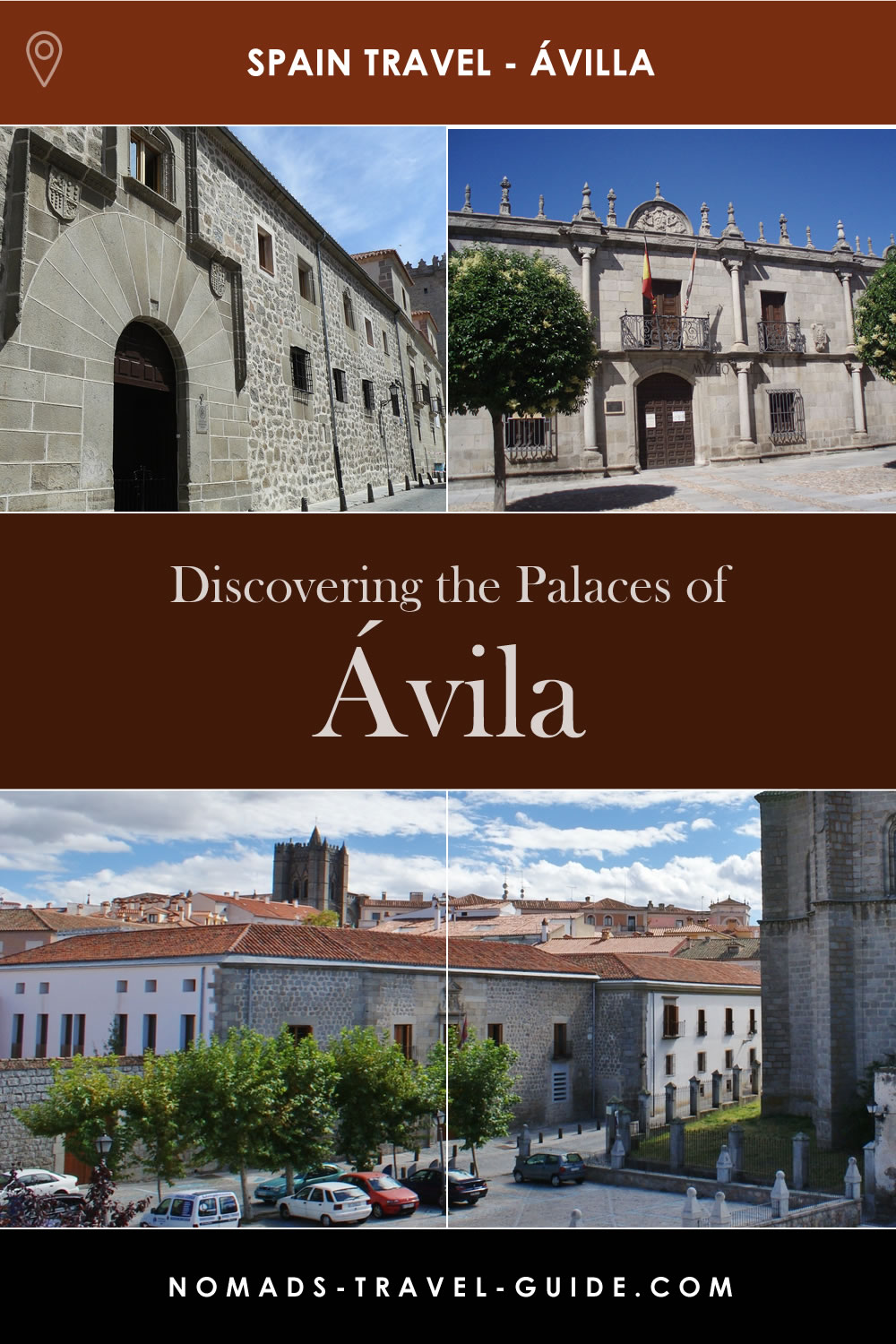
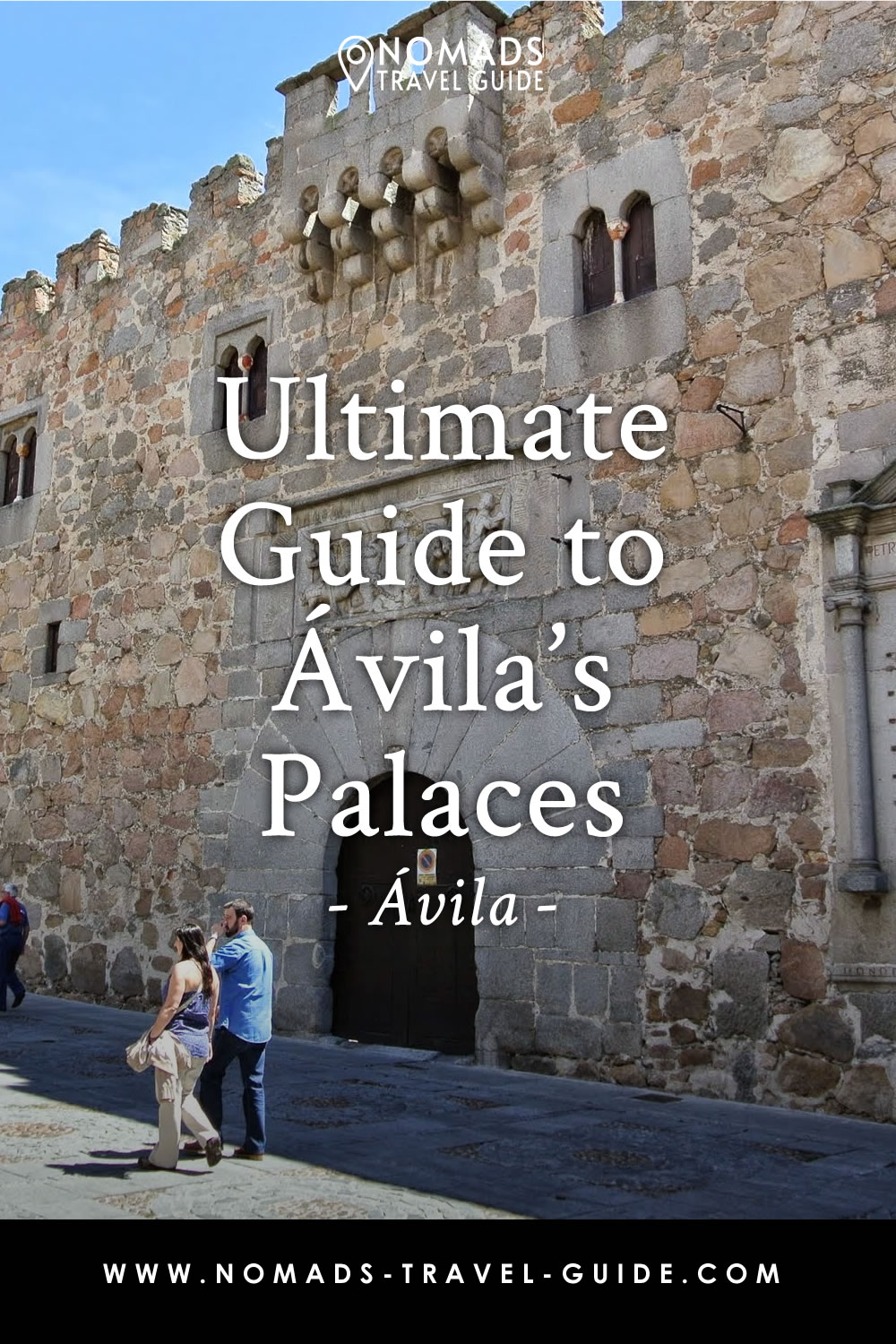
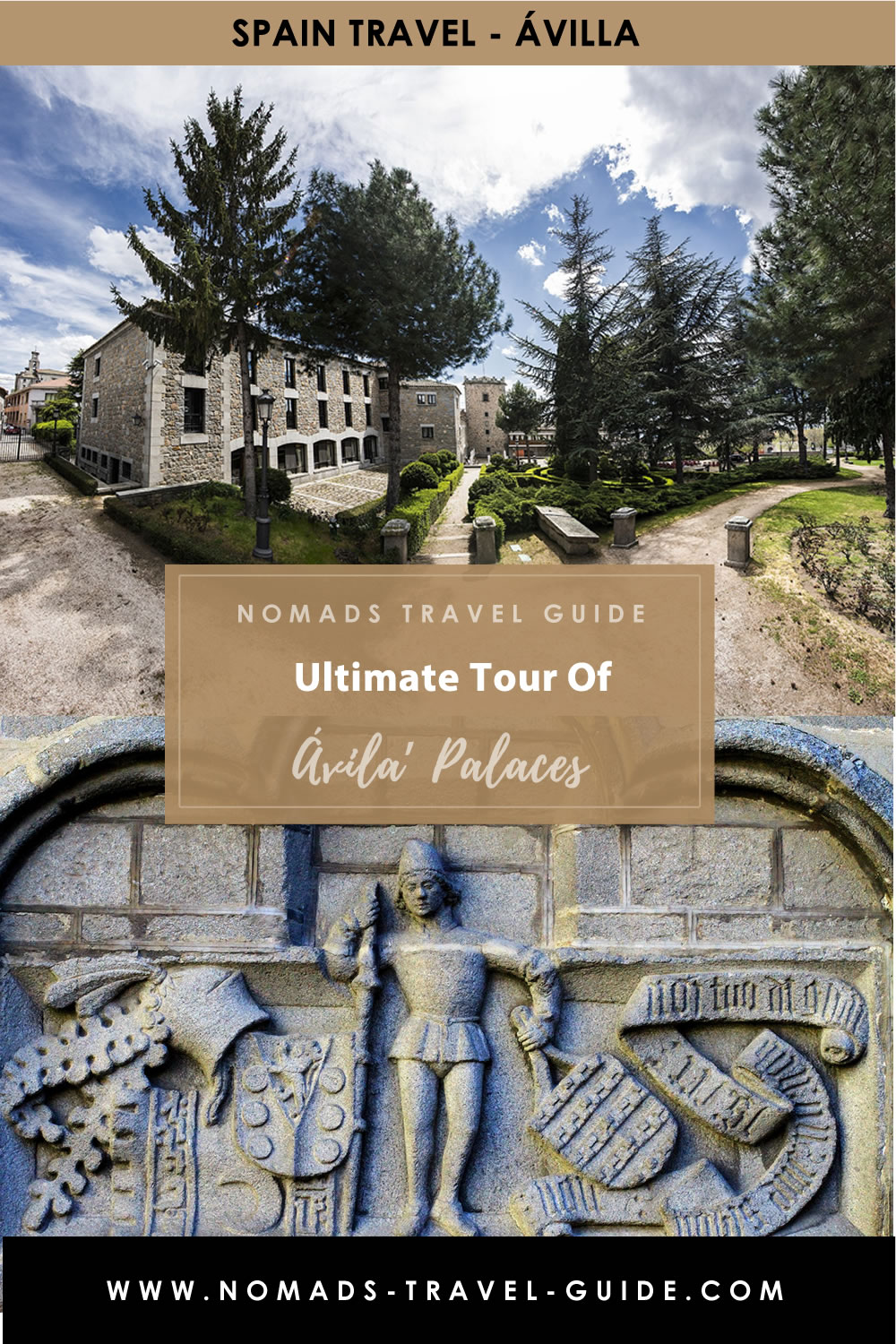
This website uses affiliate links which earn a small commission at no additional cost to you.
